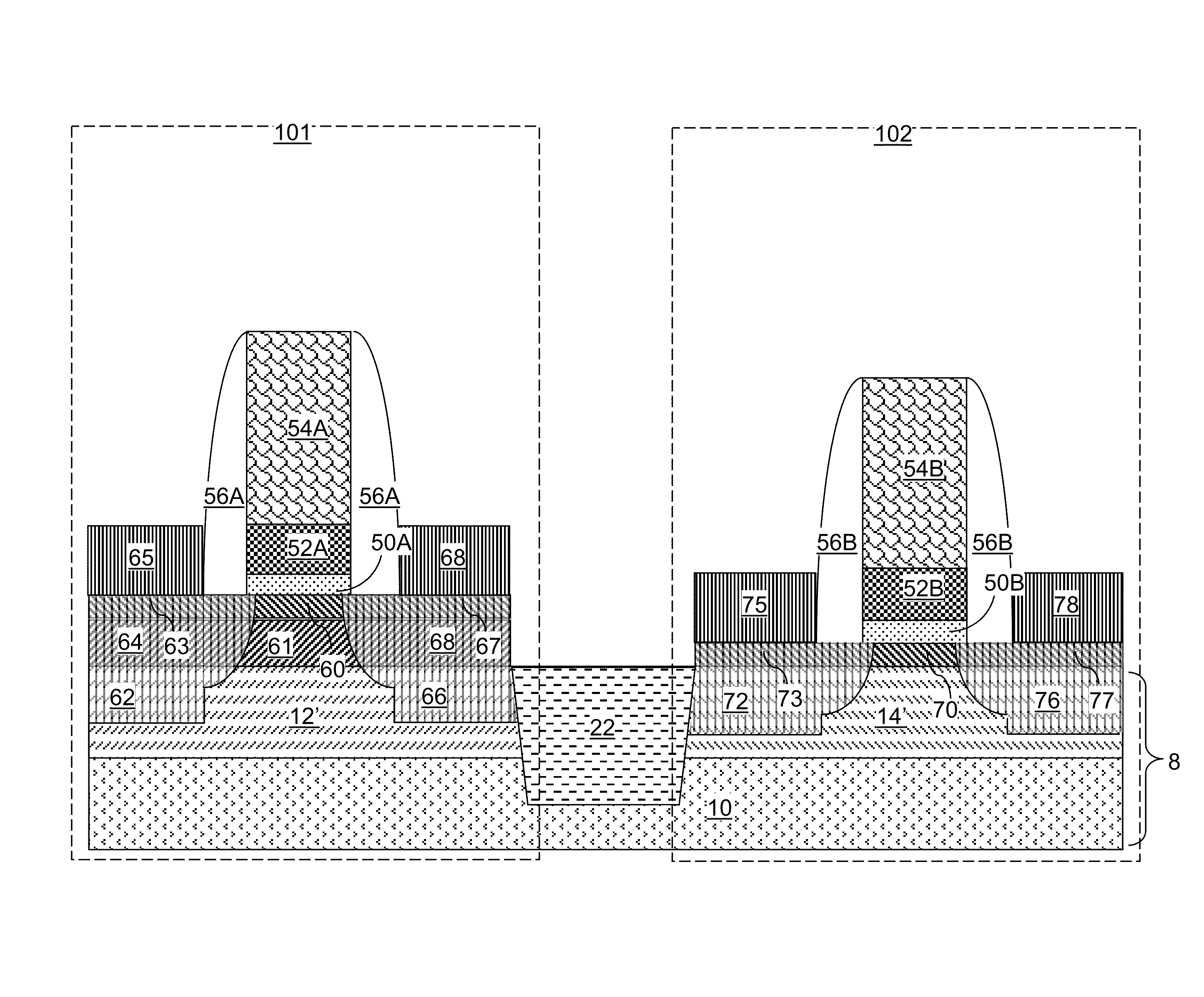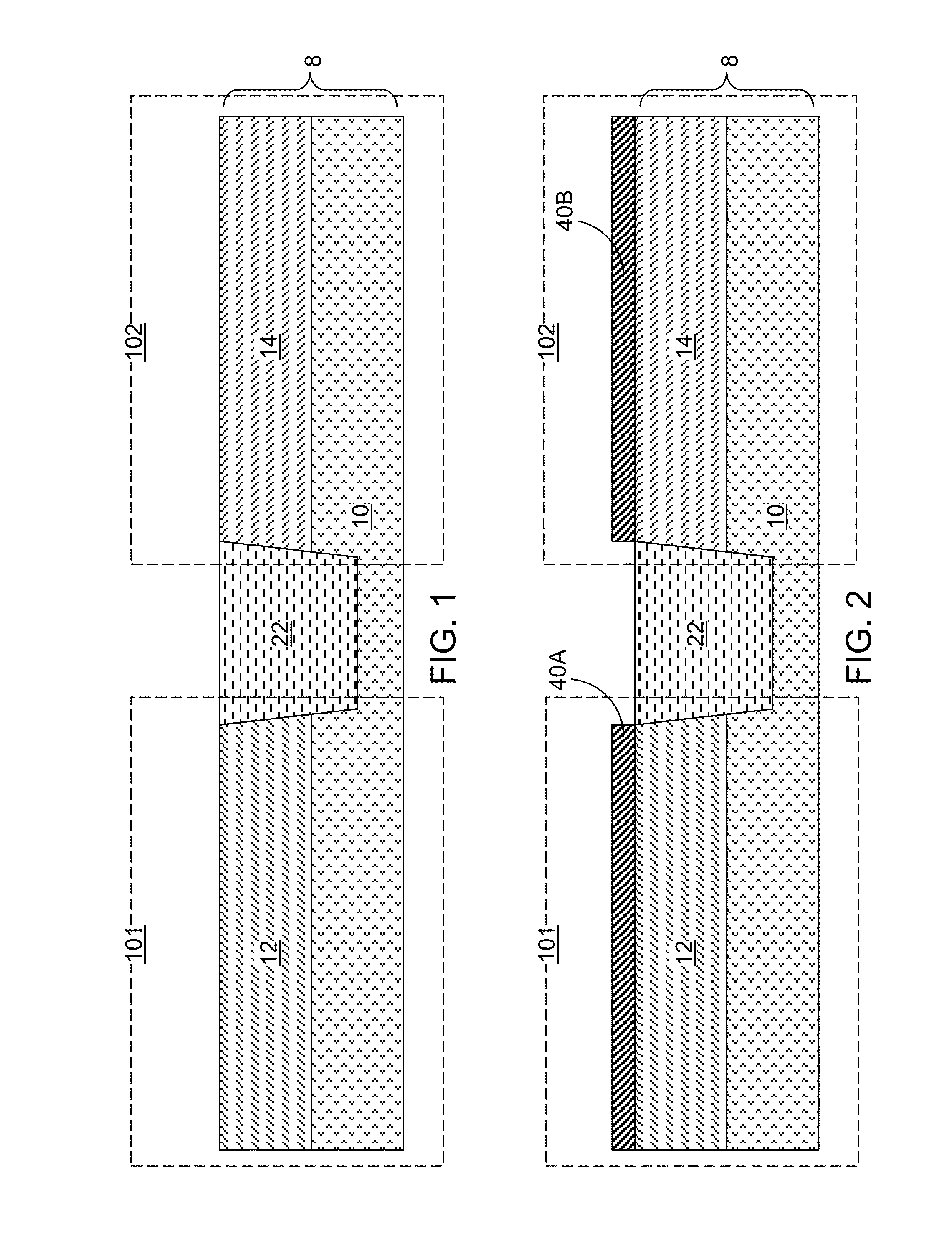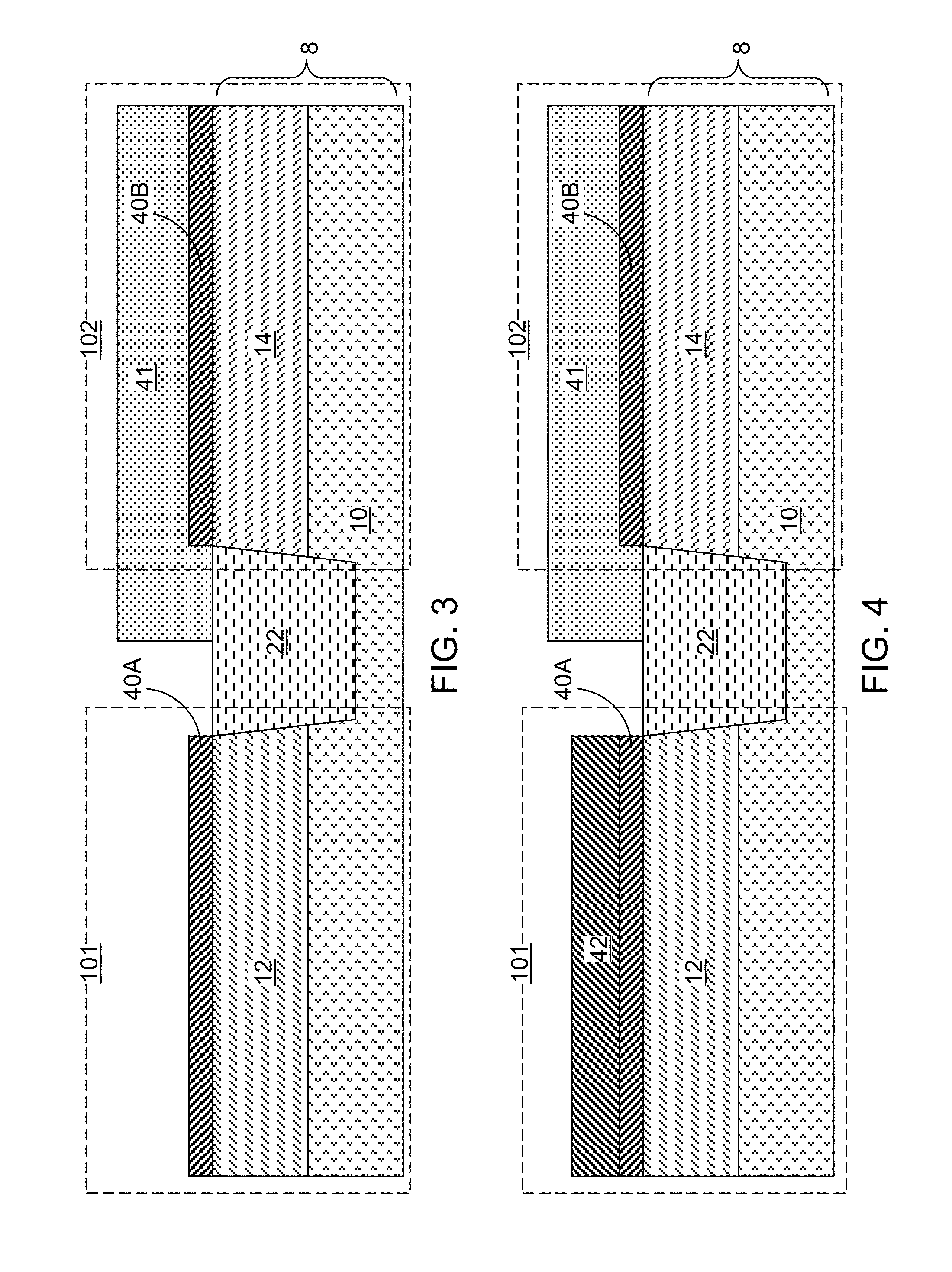CMOS having a SiC/SiGe alloy stack
a technology of sic/sige alloy and stack, which is applied in the direction of semiconductors, transistors, electrical devices, etc., can solve the problems of carbon-doped silicon oxide being more susceptible to wet etches, affecting the mobility of charge carriers (electrons) in the channel of the nfet, and affecting the efficiency of the
- Summary
- Abstract
- Description
- Claims
- Application Information
AI Technical Summary
Benefits of technology
Problems solved by technology
Method used
Image
Examples
first embodiment
[0029]Referring to FIG. 1, a first exemplary semiconductor structure according to the present disclosure includes a substrate 8, which can be a bulk semiconductor substrate including at least one semiconductor material that contiguously extends from the topmost surface of the substrate 8 to a bottommost surface of the substrate 8. The substrate 8 includes a semiconductor material layer 10 having a semiconductor material. The semiconductor material of the semiconductor material layer 10 can be, for example, single crystalline silicon, a single crystalline silicon germanium alloy, or a single crystalline silicon carbon alloy.
[0030]An n-type well 12 including a silicon-containing semiconductor material and n-type dopants is formed in a region of the substrate 8, which is herein referred to as a p-type field effect transistor (PFET) region 101. The n-type well 12 can include n-doped single crystalline silicon. In one embodiment, the n-type well 12 can be formed by providing a single cry...
second embodiment
[0060]Referring to FIG. 7, a second exemplary semiconductor structure according to the present disclosure can be derived from the first exemplary semiconductor structures illustrated in FIGS. 1-6 by substituting a semiconductor-on-insulator (SOI) substrate 8′ for the substrate 8 in the first exemplary semiconductor structure. The SOI substrate as provided includes a handle substrate 110, a buried insulator layer 120, and a top silicon layer. The handle substrate 110 can include a semiconductor material, a conductive material, a dielectric material, or a combination thereof. The buried insulator layer 120 can be, for example, a layer of silicon oxide. The top silicon layer can be a single crystalline silicon layer. In one embodiment, the SOI substrate 8′ can be an extremely thin semiconductor-on-insulator substrate in which the thickness of the top silicon layer is not greater than 5 nm.
[0061]In the second embodiment, the n-type well 12 in the first embodiment is replaced with a firs...
sixth embodiment
[0094]Referring to FIG. 21, a sixth exemplary semiconductor structure according to the present disclosure can be derived from the fifth exemplary semiconductor structure of FIG. 13 by forming a dielectric masking layer 241 (See FIG. 15) and a silicon germanium alloy layer 242 (See FIG. 15) before forming silicon carbon alloy layers (240A, 240B; See FIG. 14).
[0095]The silicon germanium alloy layer 242 is deposited on the semiconductor surface of the first silicon fin 230A, while not being deposited on dielectric surfaces. The silicon germanium alloy material of the silicon germanium alloy layer 242 can be deposited by a selective deposition process, such as selective epitaxy, in which the silicon germanium alloy material nucleates, and is deposited, on semiconductor surfaces, while the silicon germanium alloy material does not nucleate, and is not deposited, on dielectric surfaces. The same deposition method can be employed to perform selective deposition of the silicon germanium all...
PUM
| Property | Measurement | Unit |
|---|---|---|
| thickness | aaaaa | aaaaa |
| thickness | aaaaa | aaaaa |
| thicknesses | aaaaa | aaaaa |
Abstract
Description
Claims
Application Information
 Login to View More
Login to View More - R&D
- Intellectual Property
- Life Sciences
- Materials
- Tech Scout
- Unparalleled Data Quality
- Higher Quality Content
- 60% Fewer Hallucinations
Browse by: Latest US Patents, China's latest patents, Technical Efficacy Thesaurus, Application Domain, Technology Topic, Popular Technical Reports.
© 2025 PatSnap. All rights reserved.Legal|Privacy policy|Modern Slavery Act Transparency Statement|Sitemap|About US| Contact US: help@patsnap.com



